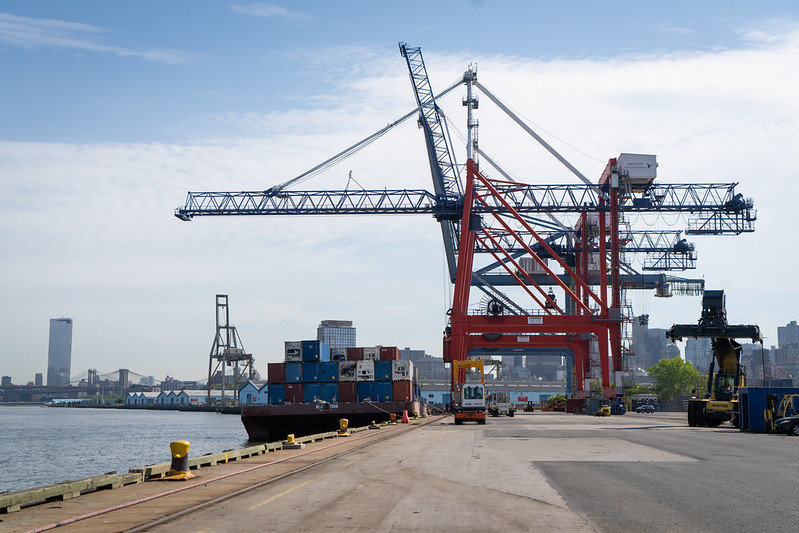The debate over Brooklyn’s maritime future has reached a fever pitch, with residents, city planners, and industry experts weighing in on proposals that could fundamentally reshape one of New York City’s most historic working waterfronts. At the center of this contentious discussion lies the Brooklyn Marine Terminal vision plan—a proposal that has sparked passionate responses from community members who see vastly different futures for their neighborhood’s industrial heritage.
The Brooklyn Marine Terminal: A Working Waterfront Under Pressure
The Brooklyn Marine Terminal, located in Sunset Park, represents one of the last vestiges of New York City’s once-mighty maritime industry. For decades, this facility has served as a crucial link in the region’s supply chain, handling cargo operations and supporting thousands of jobs in an era when many waterfront areas have been converted to luxury housing and recreational spaces.
Recent editorial coverage by The Daily News expressing opposition to the terminal’s vision plan has prompted heated responses from community stakeholders who argue that the newspaper’s position fundamentally misrepresents the proposal’s intentions and potential impact. These voices highlight a critical misunderstanding in the public discourse: the difference between preserving maritime commerce and succumbing to residential development pressures.
Understanding the Vision Plan’s True Intent
Critics of The Daily News’ editorial stance argue that the vision plan doesn’t aim to eliminate the working waterfront but rather to modernize and strengthen it for future generations. The proposal reportedly includes investments in infrastructure, technology upgrades, and expanded cargo handling capabilities that would enhance the terminal’s competitiveness in an increasingly challenging maritime market.
This perspective reflects a broader understanding of urban planning principles: that preservation sometimes requires evolution. Without significant investment and strategic planning, industrial facilities like the Brooklyn Marine Terminal risk becoming obsolete, ultimately leading to their closure and conversion to other uses—precisely the outcome that waterfront advocates hope to avoid.
The Economics of Waterfront Preservation
The economic implications of the Brooklyn Marine Terminal debate extend far beyond the immediate neighborhood. Maritime commerce contributes billions of dollars to the regional economy while providing middle-class jobs that don’t require advanced degrees—a rarity in today’s service-oriented urban economy.
Port operations support entire ecosystems of employment, including longshoremen, truck drivers, warehouse workers, and maritime professionals. These jobs often offer union wages and benefits, providing economic stability for working-class families in an increasingly expensive city. The loss of such facilities would not only eliminate direct employment but also weaken the broader supply chain infrastructure that supports businesses throughout the region.
Competing Pressures: Housing vs. Industry
The tension surrounding the Brooklyn Marine Terminal reflects a larger challenge facing post-industrial cities worldwide: how to balance the need for affordable housing with the preservation of productive industrial capacity. Waterfront land represents some of the most valuable real estate in New York City, creating enormous financial incentives for residential and commercial development.
However, converting industrial waterfront property to housing represents a one-way transformation. Once maritime infrastructure is removed and residential buildings constructed, the waterfront’s industrial capacity is lost permanently. This irreversibility makes current planning decisions particularly consequential for the city’s long-term economic diversity and resilience.
Community Voices and Democratic Planning
The passionate reader responses to The Daily News editorial highlight the importance of community engagement in urban planning processes. These voices represent diverse perspectives within Brooklyn’s communities, from longtime residents who remember the neighborhood’s industrial heyday to newer arrivals who may prioritize different aspects of urban development.
The fact that readers felt compelled to respond publicly demonstrates the high stakes involved in waterfront planning decisions. Unlike many urban policy debates that remain confined to professional planning circles, waterfront development directly impacts neighborhood character, employment opportunities, and quality of life in ways that residents can easily observe and understand.
The Role of Media in Shaping Public Opinion
The controversy also underscores the significant influence that editorial positions can have on public policy debates. When major newspapers take strong stances on planning issues, they can shape public opinion and potentially influence political decision-making processes. This power comes with responsibility—the need to accurately represent complex policy proposals and their implications.
The reader pushback against The Daily News’ editorial suggests that community members may sometimes have more nuanced understandings of local issues than media coverage reflects. This dynamic highlights the importance of inclusive journalism that incorporates diverse community perspectives rather than relying solely on official sources or predetermined editorial positions.
Broader Implications for Urban Planning
The Brooklyn Marine Terminal debate reflects broader trends in American urban development, where cities struggle to maintain industrial capacity while accommodating population growth and changing economic conditions. Cities like Seattle, San Francisco, and Boston have grappled with similar challenges, with varying degrees of success in preserving maritime commerce alongside urban development.
The outcomes of these debates often depend on political will, community organization, and economic factors that extend beyond local control. Global shipping patterns, federal transportation policy, and regional economic development strategies all influence the viability of urban maritime facilities.
Lessons from Other Cities
Other cities’ experiences offer valuable insights for Brooklyn’s waterfront planning. Cities that have successfully maintained working waterfronts typically invested in infrastructure modernization, developed clear zoning protections for industrial uses, and created economic incentives for maritime businesses to remain competitive.
Conversely, cities that lost their maritime industries often experienced short-term real estate gains followed by long-term economic challenges, including reduced employment diversity and increased dependence on service-sector jobs. These outcomes suggest that preserving industrial waterfront capacity serves broader economic resilience goals beyond immediate development pressures.
Key Takeaways
- Community engagement is crucial: Passionate reader responses demonstrate that waterfront planning decisions deeply impact local communities and require inclusive public participation
- Preservation requires investment: Maintaining working waterfronts demands strategic planning and infrastructure investment, not simply resistance to change
- Economic implications extend beyond local areas: Maritime facilities support regional supply chains and provide middle-class employment opportunities that benefit entire metropolitan areas
- Media representation matters: Editorial positions on complex planning issues can significantly influence public opinion and policy outcomes
- Irreversible decisions require careful consideration: Converting industrial waterfront to residential use permanently eliminates maritime capacity and industrial employment opportunities
- Regional competitiveness depends on infrastructure: Cities need diverse economic foundations, including maritime commerce, to remain competitive in global markets
As Brooklyn’s waterfront debate continues, the voices of engaged community members serve as essential counterpoints to simplified narratives about development and preservation. Their perspectives remind us that effective urban planning requires nuanced understanding of complex proposals and genuine commitment to community input in shaping neighborhood futures.
This article is based on reporting from the original source

Born and raised amidst the hustle and bustle of the Big Apple, I’ve witnessed the city’s many exciting phases. When I’m not exploring the city or penning down my thoughts, you can find me sipping on a cup of coffee at my favorite local café, playing chess or planning my next trip. For the last twelve years, I’ve been living in South Williamsburg with my partner Berenike.

